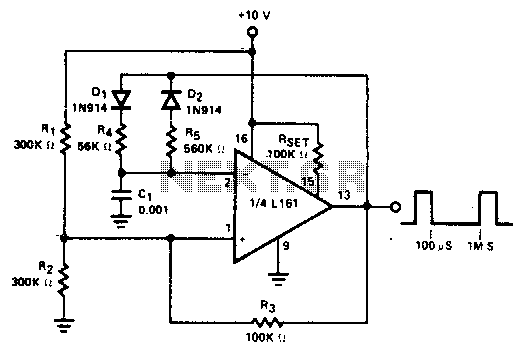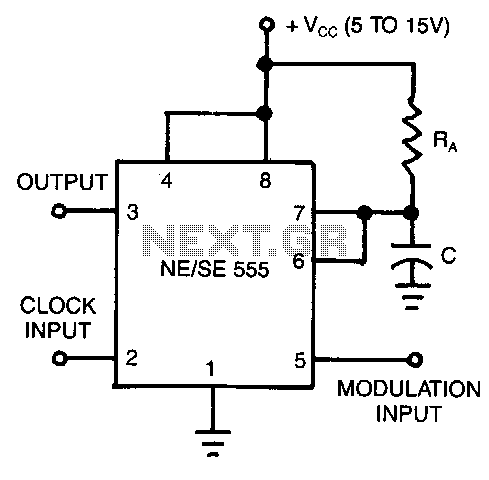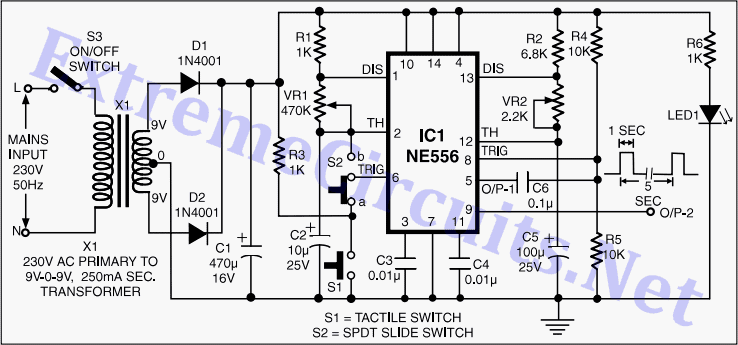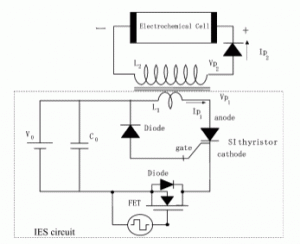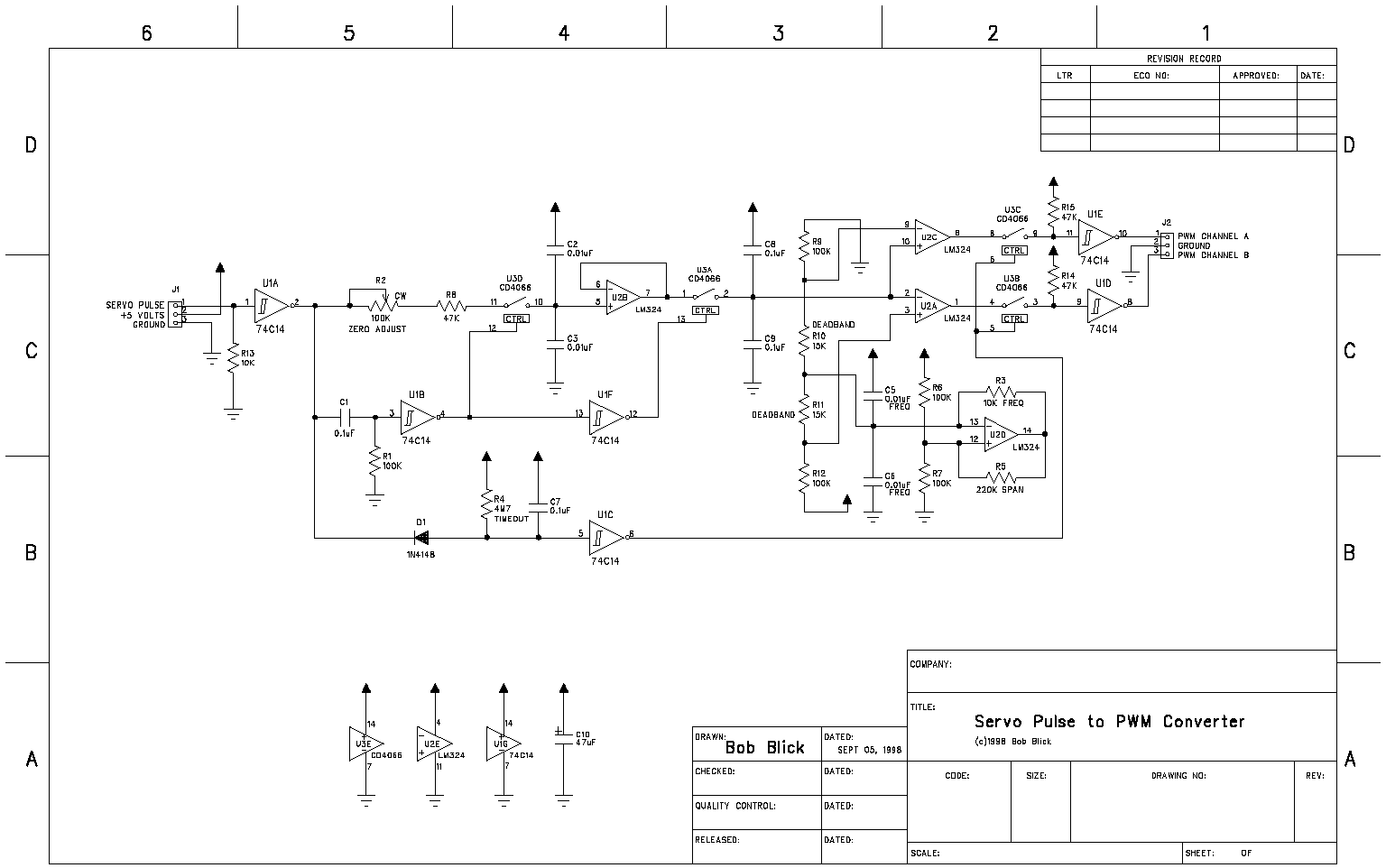
Gated pulse descrambler
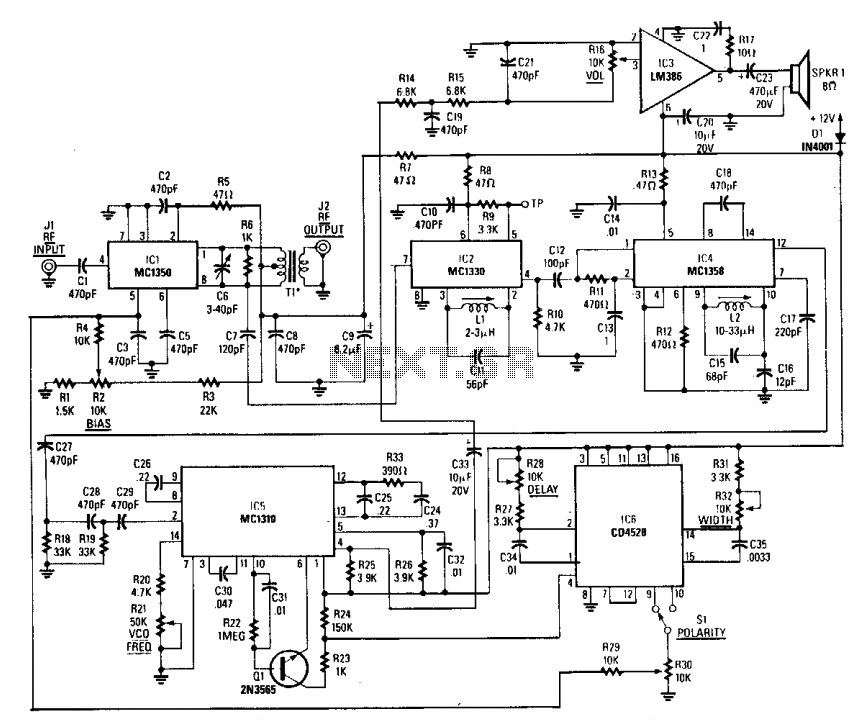
This circuit includes an amplifier and a video detector along with a secondary subcarrier detector for synchronization recovery. A pulse-former circuit modulates the gain of the main channel, enhancing it during synchronization intervals. Additionally, there is a provision for subcarrier audio descrambling.
The described circuit is designed to process video signals effectively by utilizing an amplifier to boost the strength of the incoming video signal. The video detector is responsible for demodulating the video signal, extracting the necessary information for further processing. The inclusion of a second subcarrier detector is crucial for synchronization recovery, ensuring that the output signal remains aligned with the original source, which is particularly important in applications involving video transmission.
The pulse-former circuit plays a vital role in this configuration by dynamically adjusting the gain of the amplifier during synchronization intervals. This gain modulation helps to maintain signal integrity, especially during critical moments when synchronization is required. By increasing the gain during these intervals, the circuit can effectively reduce the impact of noise and interference, leading to a clearer output signal.
Furthermore, the provision for subcarrier audio descrambling adds versatility to the circuit. This feature allows for the recovery of audio signals that may be encoded or scrambled within the subcarrier frequency. By integrating this capability, the circuit can serve dual purposes: processing video signals and recovering audio, making it suitable for various applications in multimedia systems.
Overall, this circuit represents a sophisticated approach to video and audio signal processing, combining multiple functionalities into a single design that enhances performance and reliability in synchronization and signal recovery tasks.This circuit consists of an amplifier and video detector with a second subcarrier detector for synch recovery purposes. A pulse-former circuit modulates the gain of the main channel increasing it during synch intervals. Provision for subcarrier audio descrambling is also provided. 🔗 External reference
The described circuit is designed to process video signals effectively by utilizing an amplifier to boost the strength of the incoming video signal. The video detector is responsible for demodulating the video signal, extracting the necessary information for further processing. The inclusion of a second subcarrier detector is crucial for synchronization recovery, ensuring that the output signal remains aligned with the original source, which is particularly important in applications involving video transmission.
The pulse-former circuit plays a vital role in this configuration by dynamically adjusting the gain of the amplifier during synchronization intervals. This gain modulation helps to maintain signal integrity, especially during critical moments when synchronization is required. By increasing the gain during these intervals, the circuit can effectively reduce the impact of noise and interference, leading to a clearer output signal.
Furthermore, the provision for subcarrier audio descrambling adds versatility to the circuit. This feature allows for the recovery of audio signals that may be encoded or scrambled within the subcarrier frequency. By integrating this capability, the circuit can serve dual purposes: processing video signals and recovering audio, making it suitable for various applications in multimedia systems.
Overall, this circuit represents a sophisticated approach to video and audio signal processing, combining multiple functionalities into a single design that enhances performance and reliability in synchronization and signal recovery tasks.This circuit consists of an amplifier and video detector with a second subcarrier detector for synch recovery purposes. A pulse-former circuit modulates the gain of the main channel increasing it during synch intervals. Provision for subcarrier audio descrambling is also provided. 🔗 External reference
